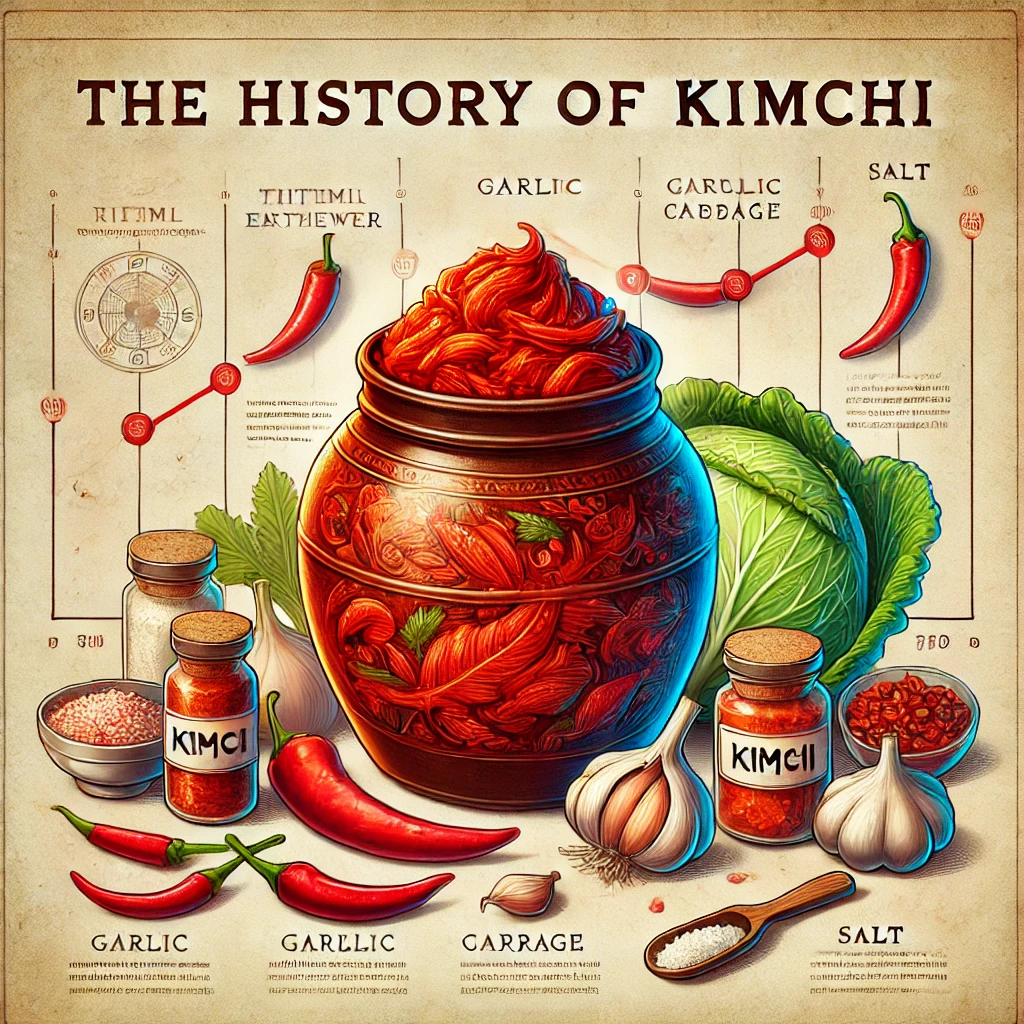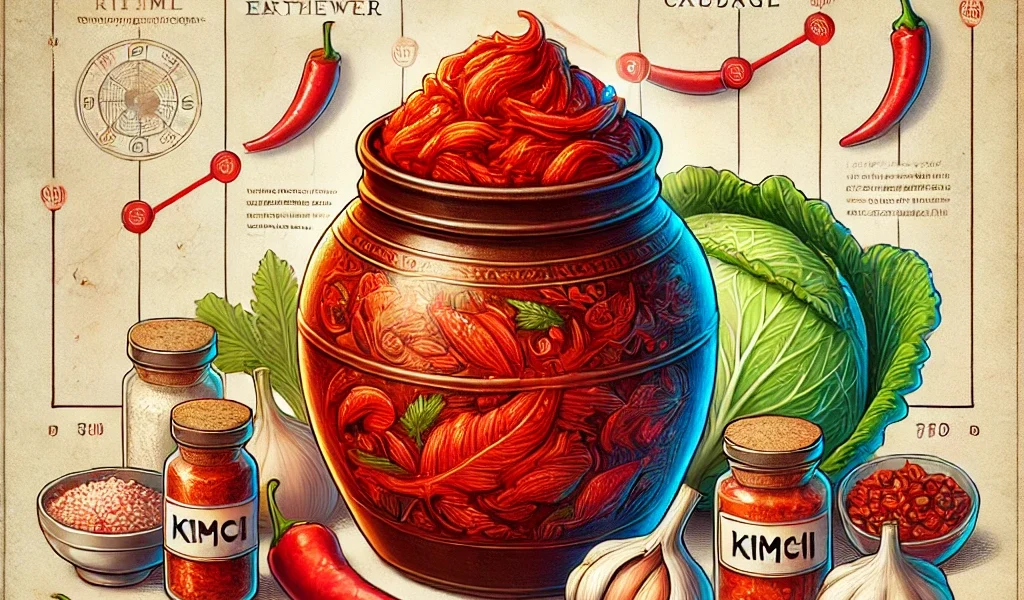“The Rich History of Kimchi: From Ancient Pickles to Korea’s Iconic Dish”
Introduction
Kimchi, the vibrant and spicy fermented vegetable dish, is synonymous with Korean cuisine. But how did this humble side dish evolve to become a symbol of Korean culture? The history of kimchi is a journey that spans thousands of years, from simple pickled vegetables to the complex and flavorful kimchi we know today.

🥒 The Early Origins: Pickling and Preservation
1. The Beginnings of Pickling
- Pickling vegetables in brine or vinegar is one of the oldest methods of food preservation, and it dates back about 4,000 years to ancient Mesopotamia or India. This method allowed vegetables to be stored for long periods without refrigeration.
- In ancient times, drying food was another common preservation technique, but it often altered the texture. Pickling offered a way to keep the vegetables crispy and flavorful.
2. Introduction to the Korean Peninsula
- The concept of pickling made its way to the Korean Peninsula through cultural exchanges. Ancient records suggest that a food called “Jū,” a precursor to kimchi, was made by soaking cucumbers in brine.
- While it’s unclear when exactly “Jū” arrived in Korea, it likely came from China around the time of the Han invasion of Ancient Joseon in 108 B.C. Over time, this fermented dish became integrated into Korean food culture.
🧂 The Evolution of Kimchi in Korea
1. Goryeo Era (918-1392 AD)
- During the Goryeo Dynasty, kimchi started to take shape as a uniquely Korean dish. Koreans pickled various vegetables like water parsley, bamboo shoots, turnips, and chives. These pickled vegetables were known as “ji,” a term that eventually evolved into the modern word “kimchi.”
- The use of salt in the pickling process helped preserve the vegetables and add a savory flavor, laying the foundation for kimchi’s distinctive taste.
2. Introduction of the Term “Chimchae”
- By the 14th century, the word “chimchae” was used to refer to pickled vegetables in Korea. “Chimchae” means “vegetables soaked in water,” echoing the process of fermenting vegetables in brine. Over time, “chimchae” evolved into “dimchae,” and later “kimchi,” as we call it today.
🌶️ The Transformation: The Addition of Chili Peppers
1. Arrival of Red Peppers in Korea
- Chili peppers were introduced to Korea in the 16th century via Portuguese traders. Initially, Koreans were hesitant to use them, fearing they were poisonous. However, this perception changed during the 17th century due to the Great Gyeongsin Famine of 1670, a time of severe food shortages in Korea.
- The addition of chili peppers to kimchi offered a way to enhance flavor, preserve the vegetables, and provide a cheaper alternative to salt, which had become more expensive due to the famine.
2. The Emergence of Spicy Kimchi
- As chili peppers became more popular, they were gradually added to kimchi, transforming it into the red, spicy version we recognize today. The pepper not only added heat but also acted as a natural preservative, allowing kimchi to last longer and giving it its iconic red hue.
🦐 The Rise of Kimchi’s Flavor: Salted Fish and Umami
- By the 15th century, Koreans began adding salted fish to kimchi, introducing a new layer of umami flavor. This practice was risky at first because the fish could spoil and ruin the kimchi, but the addition of chili peppers with their sterilizing properties made this combination more feasible.
- This step took kimchi beyond simple pickles, creating a depth of flavor that set it apart from other fermented vegetables worldwide. It became a unique blend of salty, spicy, tangy, and umami tastes.
🥬 The Birth of Modern Kimchi: Chinese Cabbage
- It wasn’t until the 19th century that Chinese cabbage became the main ingredient in kimchi. This variety of cabbage, introduced to Korea through increased trade with China, had wide leaves that could hold various seasonings, making it ideal for kimchi preparation.
- The addition of Chinese cabbage marked the final transformation of kimchi into the dish we know today, with layers of cabbage soaked in spicy red pepper paste and flavored with garlic, ginger, and fish sauce.
Conclusion
Kimchi’s journey from simple pickled vegetables to the complex, flavorful dish we enjoy today is a testament to Korea’s rich culinary history. With influences from ancient preservation techniques, foreign ingredients like chili peppers, and the creative ingenuity of Korean cooks, kimchi has evolved into a globally recognized symbol of Korean culture. Its unique blend of flavors and textures continues to captivate taste buds worldwide, making it not just a side dish but a culinary masterpiece with a story to tell.














1 COMMENTS